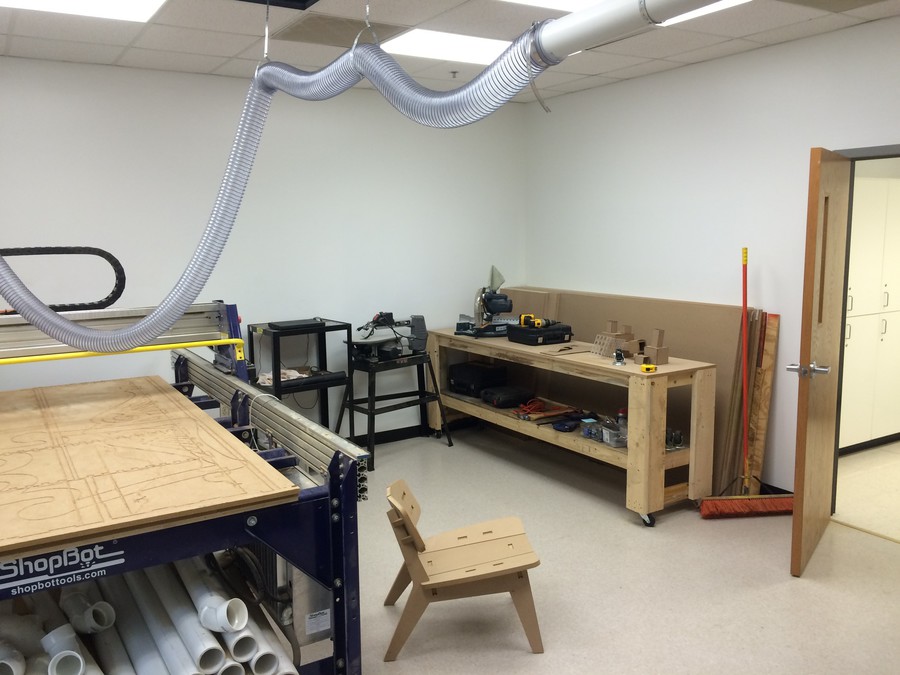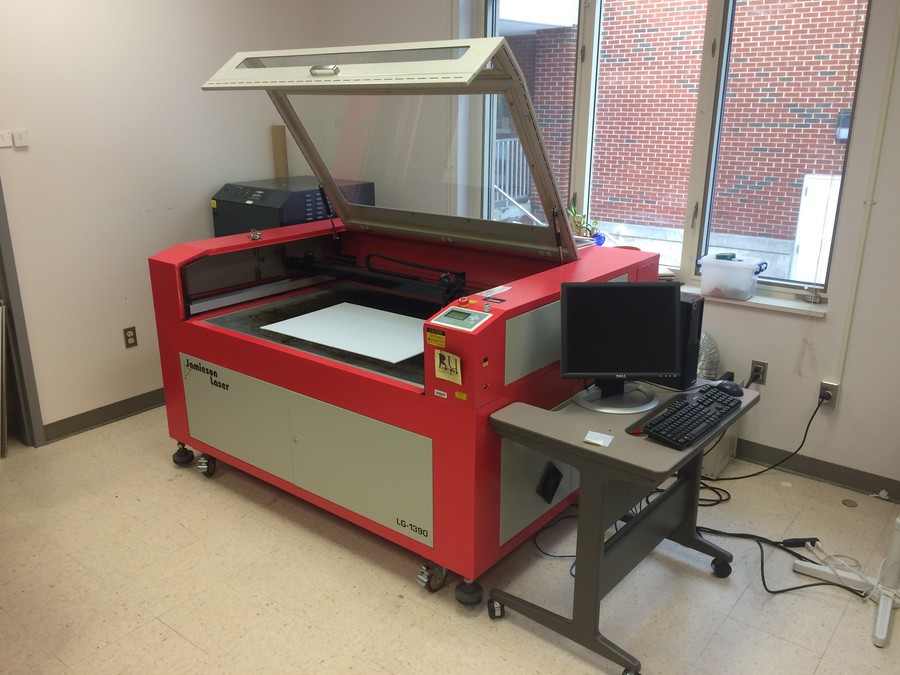Makerspace Profile
Overview
Our Makerspace is located in McGuffey Hall and was built to give design students an outlet to realize creative ideas in physical form. The majority of the equipment was purchased through the Commonwealth of Virginia’s Equipment Trust Fund, the Department of Design, and Radford University’s Scholar Citizen Initiative. Ongoing support and maintenance comes from the Department of Design. The spaces and equipment are used primarily by students in interior design, fashion design, merchandising and design management. Through partnerships and interdisciplinary projects, the spaces also see use from students and faculty in business, biology, theatre, and computer science.
Access
Students in the department of design have priority, but anyone on campus is welcome to use the space. We have yet to turn down someone from the campus community who has come to us with a project. The space is available during regular business hours, or by appointment with Assistant Professor Nate Bicak.
Tools, Materials and Resources
- 1) 60” x 96” x 6” Shopbot PRSAlpha CNC Router, 4 hp HSD Spindle
- 1) 35” x 51” Jamison Laser, 100 Watt
- 1) Stratasys Mojo 3D printer, ABSplus thermoplastic, 5” x 5” x 5” build area
- 1) Objet 24 3D printer, VeroWhitePlus photo polymer, 9.45” x 7.87” x 5.9”
- 1) DeWalt dual-bevel compound miter saw
- 1) DeWalt jobsite table saw
- 4) DeWalt Cordless drill drivers
- 3) DeWalt handheld routers
- 1) DeWalt handheld angle grinder
- 1) Skil Variable speed scroll saw
- 1) DeWalt orbital sander
- 1) Porter Cable belt sander
Hand tools: hammers, pliers, screwdrivers, wrenches, tape measures, squares, levels
The Department of Design maintains a stock of 3D printer material, 1-ply and 2-ply chipboard, cardboard, acrylic, styrene, and cork for laser cutting. Additionally, our CNC room has scrap plywood and dimensional lumber for student use.
Access & Usage Costs
The Department of Design subsidizes the space; there is no charge to students.
Management
~ ~ ~Training
Design students are taught to use the laser cutter and 3D printers in classes. Other training occurs through workshops in design studios, one-on-one training, and student-to-student peer training.
Use and Activity
Our space is used primarily for individual and group student projects in interior design, fashion design and merchandising. Equipment training occurs in classes, through a program developed with our university’s environmental health and safety officer.
Culture and Community
Our spaces and equipment have helped students become more likely to build something to solve a problem, to understand problems in a contextual manner, and to explore multiple solutions to an issue.
Challenges and Lessons Learned
Maintenance of equipment, management of the space, hours of operation and access are all difficult aspects to figure out initially. We rely on some well-trained and motivated work-study students to keep up on maintenance and run the spaces.
Developing and conducting safety training for equipment was an unknown in the beginning. We worked with our environmental health and safety professionals to perform OSHA training and to develop safety-training protocols.
Advice to other Makerspaces
Start with manageable tools and equipment. Hand tools and 3D printers can do a lot to support the beginnings of a makerspace.
Do not be intimidated by the more complex pieces of maker equipment (3D printers, laser cutters, CNC mills, injection molders, vacuum formers) – these technologies have become very intuitive and user friendly.
Identify individuals who can help you with equipment set up and maintenance. Having a go-to source for troubleshooting (other than manufacturer support) is very important and makers are generally more than willing to help each other!
Identify the need for a makerspace before you build it. This will help determine workshops, tutorials and other programming that should occur to help cultivate a culture of making.


